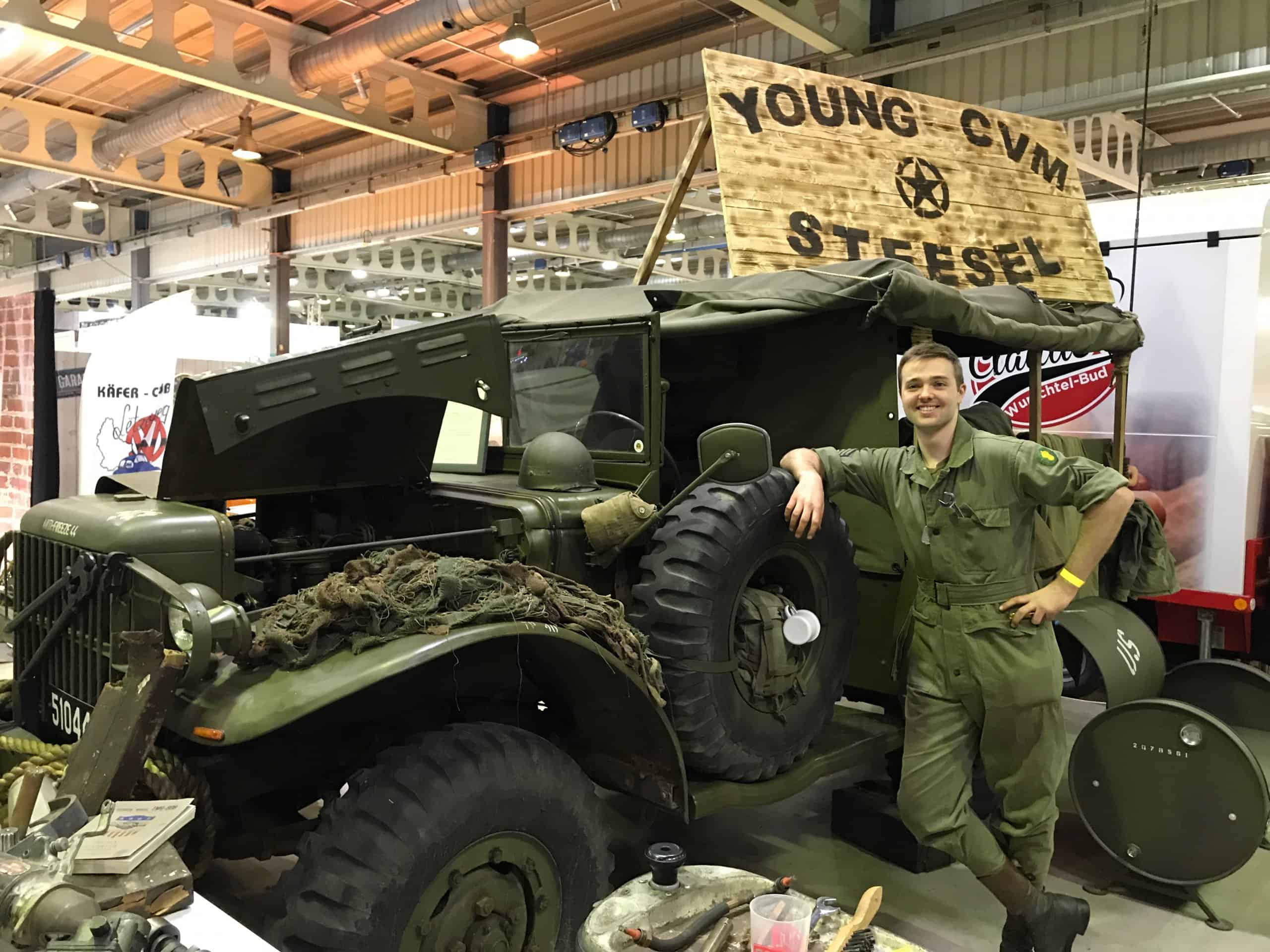The mission of the Federation Internationale des Vehicules Anciens is to ensure that classic vehicles “will still be on the roads 50 years from now.”
The only way to do that, FIVA adds, is “to attract young people to the historic vehicle movement.”
To that end, FIVA notes, the CVM Steesel historic military vehicle club of Luxenbourg in 2016 not only established a “youth section” but purchased a 1943 Dodge WC51, a 4-wheel-drive truck from World War II for the young members to restore.

“The club owns the truck and pays for the spare parts, but it’s the young members who first restored it, supervised by some of the older members, and who now carry out all the maintenance,” Sandra Heinisch of the Lëtzebuerger Oldtimer Federation ASBL is quoted in the FIVA news release.
“When CVM first bought the Dodge, it had some mechanical issues that needed attention,” she added. “Over the following month, the newly recruited young members learned to fix electrical problems, rebuild the fuel pump and one of the vacuum windshield wiper motors, and then painted the vehicle with the markings of the division that liberated Steensel during WWII.
“Once it was running, two of the earliest young members to join, Jeff Heiderscheid and Michel Schintgen, became the first to learn how to drive this classic military truck. More and more young people then joined the youth section, learning about the Dodge and how to drive it. CVM is only a small club but today there are 11 young women and men actively involved.
“The older members continue to teach the youngsters new skills by using the Dodge,” she continued. “For example, the axle shaft was changed, and a used engine bought, rebuilt and installed with great success. The Dodge now runs properly and the youth section can use it to participate in meetings and tours. Two new drivers are currently undergoing the training process.”
“The active involvement of the younger generation is crucial to the survival of our movement and the preservation of the ‘moving museum’ that we can enjoy seeing on the roads,” said Tiddo Bresters, FIVA president.
“Historic vehicles are time machines, no different from historical buildings or art in terms of the stories they tell about our society and culture – a heritage that goes way beyond the mere history of transport.
“What strikes me most strongly is that this Dodge project reminds us how, 75 years ago, soldiers of the same age as these Luxembourg youngsters arrived in vehicles like this Dodge to liberate Europe from Nazi occupation, a liberation for which many of them paid the highest price,” he added.
“It’s hard to think of a better illustration of the importance of the ‘living preservation’ of time machines such as this, for us and for future generations.
“CVM’s youth section is a fantastic example of how to attract the next generation, as most of them would be unable to afford their own vehicles and lack the necessary experience to maintain and drive them. Similar projects could work well for many clubs around the world but, as Sandra Heinisch is quick to point out, it’s vital to have older members with the experience, skills – and above all the willingness – to share their enthusiasm with young people.”






Amazing the kids could get it to this shape after 70 years of “civilian” use. I doubt if the average American kid would be interested in learning to drive this as most have never seen a clutch pedal.
I drove one of them while a member of the DC National Guard somewhere between 1966 and 1971. It is not the easiest to drive as the transmission is not synchronized. My unit, the 115th Evacuation Hospital did not have any of these, so I don’t know how it was in our possession. I was asked to take it from the Armory near RFK Stadium to Camp Sims in SE DC through DC streets. I had no problem as all of my personal vehicles to this day are stick, except my late wife’s Malibu. Many of the guys in the unit were amazed I had been able to do it with no problem and asked how I had done it. No problem, double clutch.